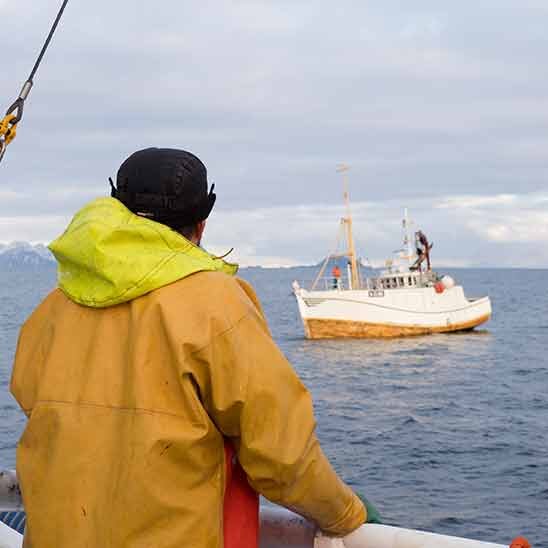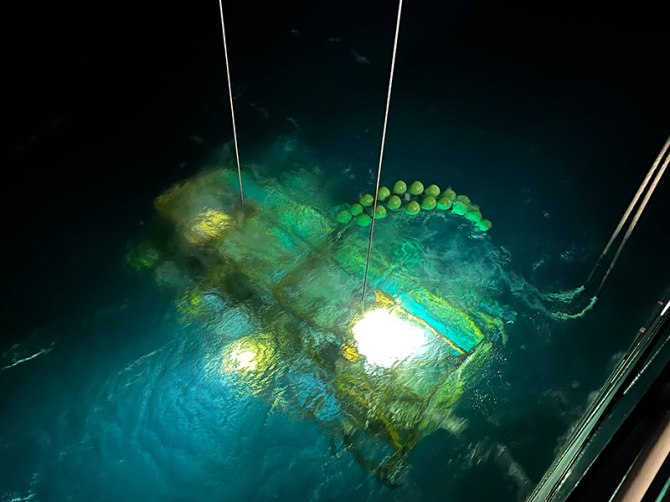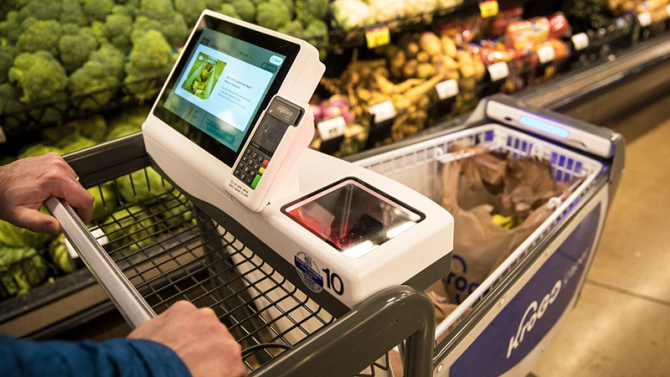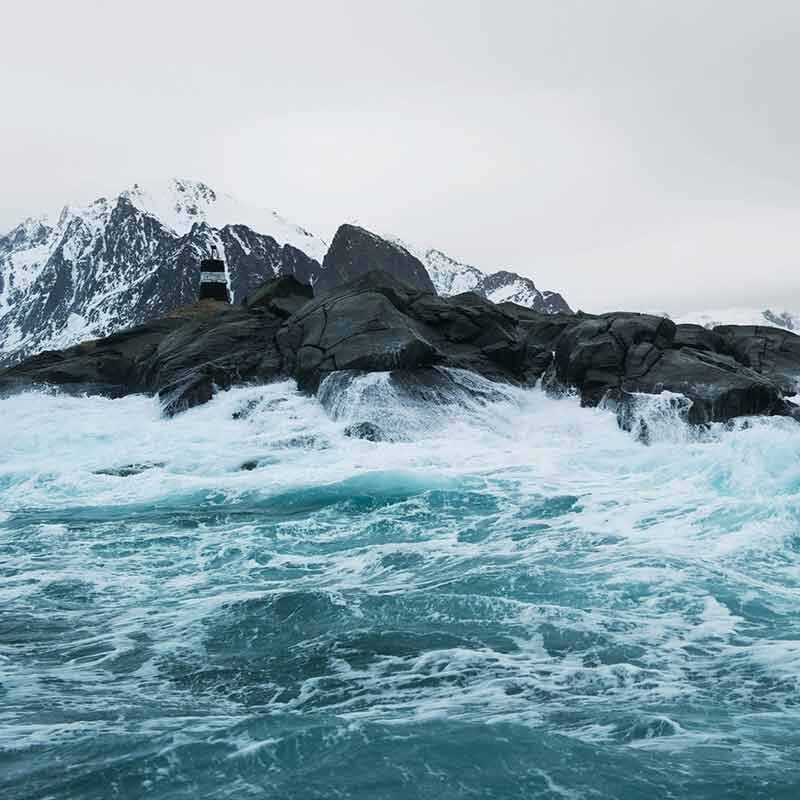NSC research has revealed that 71% of seafood consumers say origin labelling influences their purchase of seafood. Meanwhile, governments worldwide are legislating for greater transparency and traceability in seafood value chains.
This pressure is causing the industry to search for innovative ways to ensure seafood’s provenance and sustainability. Fortunately, as technologies like IoT (Internet of Things), UAVs (Unmanned Aerial Vehicles) and AI (Artificial Intelligence) mature, they’re offering transformative applications. This is resulting in the seafood industry’s digital transformation - from sea to plate.
In this article we explore the trends and pressures driving digital transformation in the seafood sector. We also spotlight some of the latest innovations, which are improving efficiency, traceability and transparency across the value chain.
- Rising concerns about seafood provenance and sustainability
- Digital technologies transforming the value chain.
- How amphibious drones & AI are preserving natural environments and reducing waste in seafood harvesting.
- How IoT is improving animal welfare and efficiency in aquaculture.
- Trading platforms improving traceability and reducing seafood waste.
- How retail is embracing digital – to improve customer experience as well as efficiency.
Rising concerns about seafood provenance and sustainability
Sustainability has come into sharp focus in recent years as feeding the world’s growing population ascends the public agenda. This, and concerns for the environment, animal welfare and unethical labour practices, are causing consumers to take more interest in where and how their seafood is sourced. Meanwhile, global, regional and national legislation is catalysing a shift towards responsible and sustainable practices across the value chain.
Sustainable seafood is vital for food security
Global research organisation, WorldFish, has highlighted the benefits of sustainable ocean food systems in providing livelihoods and nutrition, arguing global food systems can achieve negative emissions by 2050.
At COP28 in Dubai, campaigners highlighted the potential for aquatic food systems to feed the growing global population. This illustrates growing recognition for seafood as a valuable protein, plus the importance of effective fish stocks management to safeguard its availability for future generations.
Provenance & sustainability influence purchases
Thanks to campaigners and media interest, consumers are aware of the impact of their choices. So they’re asking more questions and making conscious decisions to support sustainable and ethically sourced seafood.
The NSC spoke to 18,000 seafood consumers worldwide, and 71% agreed origin labelling affected their seafood purchases. Many are willing to pay a premium for sustainability too, with more than 4 in 10 saying they'll pay more for sustainable fish or seafood.
This highlights opportunities for retailers, distributors and producers to improve and communicate traceability, raising sustainable seafood’s value as a result.

Photographer: Try
Legislation is pushing for transparency
Uni-lateral agreements and legislation are accelerating the move towards responsible and sustainable practices. Through initiatives such as the Port State Measures Agreement (PSMA), the FAO Voluntary Guidelines for Catch Documentation Schemes (CDS), and national regulations like the EU's Common Fisheries Policy (CFP) and U.S. Seafood Traceability Rule, governments are setting standards and requirements for documenting and tracking seafood. In turn, seafood producers, processors, and retailers are complying through implementing robust systems that record catch data and verify origin.
Digital technologies transforming the value chain
Fortunately, groundbreaking technologies are maturing and being adopted across the seafood value chain. From harvesting to production and distribution, to understanding and predicting consumer preferences.
- Amphibious drones & AI preserving ecosystems and eliminating the guesswork in seafood harvesting.
- Robots, drones, IoT & machine learning improving efficiency and decision-making in aquaculture.
- Trading platforms mimimising waste and transaction costs through simplified buying and selling.
- Retailers creating immersive "phygital" experiences with QR codes, robot shoppers & mobile payments.
Fishing is, of course, absolutely possible without using AI. But the increased knowledge means we will be able to make better decisions, both for the environment and the business.
Anette Grøttland Zimowski
Chief marketing and communications officer at Ava Ocean
Precision harvesting: scallops to sea urchins
Wild seafood is traditionally harvested through dredging, which causes lasting damage to the seabed. So when the Norwegian government banned dredging in 1993, Ava Ocean’s scallop fishery was forced to close until they could come up with a new approach.
Today, the scallop fishery is thriving, having shown regulators the value of its state-of-the-art amphibious drone: the "Ava Ray". Using innovative non-invasive technology, this is successfully reducing the guesswork in harvesting as well as the environmental impact of scallop harvesting.
According to Anette Grøttland Zimowski, chief marketing and communications officer at Ava Ocean, the Ava Ray is:
"unlike any other fishing gear in use today, [it means you know] exactly what you harvest, where you harvest.”
Scallops are part of a diverse ecosystem on the seabed called the benthic zone. Dredging disturbs its vital biodiversity, leading to damage, which has wide-ranging effects on surrounding sea life. To avoid this, the "Ava Ray" seabed harvester gently hovers above the seabed, plucking seafood using a precision water flow system to efficiently lift its target. Ava Ocean’s advancements are not just about technology but also a shift in mindset.
“The focus for [previous] technological improvements have been mainly geared towards improving efficiency. It is only in recent years that environmental and ecosystem impacts have started to become a consideration to R&D in the industry.”

Photographer: Ava Ocean
Next, the business plans to incorporate AI to refine precision techniques.
“Fishing is, of course, absolutely possible without using AI. But the increased knowledge means we will be able to make better decisions, both for the environment and the business.”
Keen to continue reducing its environmental impact, Ava Ocean works closely with marine scientists.
“We still know so little about the intricate workings of the habitats we harvest from, and it will take time and research to begin to truly understand the impact of doing anything on the seabed, even with our gentle harvesting method.”
Ava Ocean is applying the technology in other locations for seafoods like sea urchins and sea cucumber. It has also received government funding to harvest an overgrowth of sea urchins in Northern Norway. The goal? Revitalise lost kelp forests and develop new products from the urchins gathered.
When asked whether Ava Ocean’s sustainability credentials are important to their customers, Zimowski explains that although sustainability and traceability are becoming more important, price and supply remain a big draw.
“With a world in financial turmoil, price and availability continues to be of critical importance to most buyers. Many consumers will still pay for superior quality and the knowledge that the food on their plate does not come from environmentally harmful fisheries, but it is a crowded space with a lot of tall tales and unsubstantiated claims.”
This makes education even more important; she says,
"Even if they are environmentally conscious, most people have no idea how scallops are traditionally caught, or how harmful dredging is to seabed habitats. So, the job starts there, working with our customers B2B to educate and inspire.”
Improving welfare & efficiency in aquaculture
Aquaculture is vital if the industry is to meet demand for sustainable seafood. Fortunately, a raft of technologies is helping to streamline operations and maximise yield for aquaculture farmers.
- REMOTE MONITORING: In a sector where growth takes place out-of-sight and underwater, IoT supports ‘smart fish farming’, enabling farmers to optimise operations and safeguard the welfare of their fish. Farmers are notified when anomalies or emergencies occur, leading to improved efficiency and productivity plus reduced labour and operational costs.
- ROBOTICS AND AUTOMATION: Robotics and automation can improve speed, accuracy and quality in aquaculture. Adapting to different types and sizes of fish, robots skilfully and hygienically fillet, sort, grade and package fish; with minimal human involvement. As well as reducing labour costs and energy consumption, this can increase safety and profitability.
- DRONES IN FISHERIES: Drones have become a valuable tool in fisheries management. Employed for surveillance, they allow authorities to monitor fishing activities and enforce regulations. Drones are also used for fish-stock assessment, providing valuable data on population size, migration patterns and habitat conditions, while playing a crucial role in monitoring illegal fishing activities and aiding in the conservation and protection of marine resources – particularly at offshore sites, high-risk or difficult to access locations.
Trading platforms reducing seafood waste and improving traceability
One in three fish caught is never eaten, according to tech firm Rooser. To address this, the Edinburgh-based firm has created a seafood-trading platform for Europe’s 140,000+ seafood buyers and sellers.
Enabling faster, more transparent buying and selling of seafood, the platform helps to reduce waste. And as the company scales globally, it has plans to improve traceability, through using the data to accurately track the carbon footprint of each piece of fish.
This data could then be used by governments to better manage fish stocks, says Wired magazine, describing Rooser as having the potential to "become the Google Maps for the fishing industry."
As QR codes replace barcodes, there’s a huge opportunity to educate consumers about every detail: from country – or even square mile – of origin, to what the fish was raised on and how you might like to cook it.
Kjetil Hestad
Director of aquaculture and market access, Sjoematbedriftene
How retail is embracing digital
Retailers are embracing technology to improve productivity and boost customer experience. AI crunches valuable data on consumer behaviour, enabling them to predict demand and streamline inventories.
A handful of retailers are using algorithms to inform product development, optimise pricing and improve personalisation. And several pioneers are creating immersive ‘phygital’ shopping experiences.
But with innovations like QR codes in their infancy, seafood distributors say consumer education is vital to encourage adoption.

Photographer: Warehouse automation
The smartest smart stores
In China’s Hema Fresh, smart technology means customers can scan QR codes on products to get more information – including when food items were harvested, where they were sourced from and when they were delivered to the store. With a strong emphasis on domestic produce, this system also highlights locally sourced credentials.
Payment can be made through the Hema app, while the in-store dining experience – staffed by robots – is a big draw. Customers can use the app to book a seat and order their food, before robots move items from the shelves to the kitchen and deliver meals when they’re ready.
Maximising the benefits of QR codes
Some seafood consumers want to know more about the life of their fish before it arrives in their shopping basket. These important, underlying questions can be answered by QR codes.
Kjetil Hestad, director of aquaculture and market access, Sjomatbedriftene says:
“As QR codes replace barcodes, there’s a huge opportunity to educate consumers about every detail: from country – or even square mile – of origin, to what the fish was raised on and how you might like to cook it.
But this potential is not yet being used to its full potential.”
“To pick up your phone and scan a QR code to get that information, to read it and make a decision on whether you take a product or not? That’s a time-consuming process – and one that is certainly off-putting for many consumers.”
Hestad explains that many consumers don’t even realise what information is offered through QR codes – even if it's exactly what they want to know. And this information will become increasingly important as suppliers opt for QR codes to replace product information.
“If it’s cheaper for producers to use a QR code instead of printing information on packages, they might start to do that.”
When asked about what the solution is, Hestad says:
“Consumer education is vital, and it needs to be done joined up and at a large scale at the company and at the organisation level. It’s not enough for one company to do this. The only way we can give consumers the opportunity to use QR codes, is to help them understand what these codes are.”

Fishing in coastal communities.
Photographer: Luca Righi
Conclusion
The digital transformation sweeping through the seafood supply chain represents a sea change in how the industry operates.
Driven by environmental sustainability and operational efficiency, these advancements are not just reshaping the landscape of seafood harvesting and aquaculture, but also enhancing end-to-end traceability and transparency in the entire value chain.
As these digital tools evolve, there’s potential to go further, preserving natural environments, ensuring animal welfare, and reducing waste. And with widespread adoption, these technologies can go towards reassuring consumers that they are buying responsibly sourced products.
The journey towards a fully digital supply chain is complex and fraught with challenges. But these potential benefits make this transformation both necessary and inevitable. For the seafood sector, embracing digital innovation is no longer just an option; it will be essential for sustainability and success in the modern marketplace.

